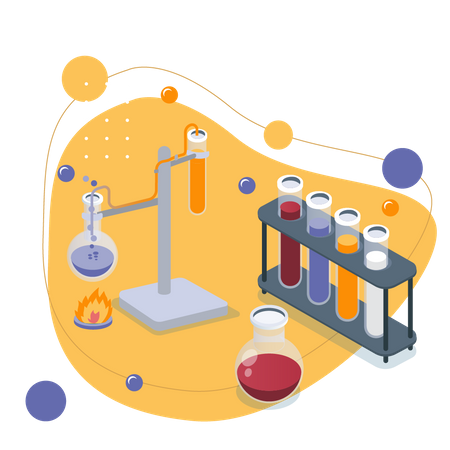Identifying Common Gases (GCSE Chemistry)
Identifying Common Gases
Hydrogen Gas Test
- A burning splint identifies hydrogen. In the test to identify hydrogen, a burning splint is used. The splint is held at the open end of a test tube.
- A squeaky pop is heard. If hydrogen is present, a squeaky pop will be heard. The hydrogen burns rapidly and reacts with the oxygen in the air, producing a characteristic squeaky pop.
Oxygen Gas Test
- A glowing splint identifies oxygen. In the test to identify oxygen, a glowing splint is used. The splint is held at the open end of a test tube.
- The glowing splint relights. If the test tube contains oxygen, the glowing splint will relight.
Carbon Dioxide Test
- Lime water identifies carbon dioxide. In the test to identify carbon dioxide, lime water is used. Lime water is the other name for calcium hydroxide.
- Lime water turns cloudy. When carbon dioxide is shaken or mixed with lime water, the resulting solution will turn milky. The solution can also be described as cloudy.
Chlorine Test
- Litmus paper identifies chlorine. In the test to identify chlorine, litmus paper is used. The litmus paper must be damp.
- Litmus paper turns white. When chlorine gas is present, litmus paper will be bleached and turn white.
Ammonia Test
- Ammonia has a characteristic smell. The smell of ammonia can be described as a ‘choking’ smell.
- Litmus paper identifies ammonia. In the test to identify ammonia, litmus paper is used. The litmus paper must be damp.
- Litmus paper turns blue. When ammonia gas is present, litmus paper will turn blue.
- Ammonia can be identified using concentrated hydrochloric acid. It can also be identified by holding hydrogen chloride gas, from concentrated hydrochloric acid, near it. This will form a white smoke of ammonium chloride.
Sulphur Dioxide Test
- Acidified potassium dichromate (VI) identifies sulphur dioxide gas. It turns acidified potassium dichromate (VI) solution from orange to green.
- The chromium ion is reduced. In the presence of sulphur dioxide gas, the chromium ion is reduced from VI to III.
FAQs
Common gases are gases that are frequently encountered in everyday life and in scientific experiments. Some examples of common gases include air, nitrogen, oxygen, carbon dioxide, and hydrogen.
There are several ways to identify common gases, including observing their physical and chemical properties, performing experiments with them, and using special instruments such as gas chromatography or mass spectrometry. Some common methods for identifying gases include the observation of their density, color, odor, and reaction with other chemicals.
Physical properties of gases are characteristics of gases that can be observed without changing their chemical composition. Examples of physical properties include density, color, and pressure.
Chemical properties of gases describe how gases react with other chemicals and how they change chemically over time. Examples of chemical properties include reactivity, flammability, and acidity.
Density is the mass of a substance per unit volume, and it can be used to identify gases because different gases have different densities. By measuring the density of a gas, it is possible to determine which gas it is and distinguish it from other gases with different densities.
Color can be used to identify gases in certain circumstances, as some gases have a characteristic color that is unique to that gas. For example, chlorine gas is greenish-yellow in color, while nitrogen gas is colorless.
Odor can be used to identify some gases, as some gases have a characteristic odor that is unique to that gas. For example, natural gas has a distinctive, sulfurous odor that is added to the gas so that leaks can be detected easily.
It is important to identify common gases in GCSE Chemistry because gases play a crucial role in many chemical reactions and processes. By understanding the properties of different gases and how to identify them, students can better understand the behavior of gases and how they interact with other chemicals in a variety of situations. This knowledge is essential for success in GCSE Chemistry and for pursuing further studies in chemistry and related fields.






Still got a question? Leave a comment
Leave a comment